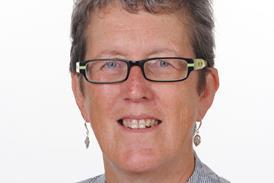The must-read stories and debate in health policy and leadership.
- Today’s cutting Cowper comment: Severed but not broken
- Today’s insight on the North West: Provider groups take the lead
One paradox of the pandemic for the health service is that during its peaks, most other demands on hospitals go away.
Last spring, having cancelled electives more or less entirely, with lockdown stifling injuries and viruses, and with some other urgent/emergency patients largely too terrified to go near A&E, in a lot of places the NHS was quieter than it has ever been.
Autumn’s second wave was harder work for many - the health service had restored most planned ops and some emergency care was returning; there was no long-term full lockdown.
The full pelt of January’s lockdown and pandemic peak brought another major lockdown and hospital clearout - though to a lesser extent than last spring, and with even more covid patients.
Now, non-covid emergency patients appear to be returning in their droves - perhaps because lockdown is easing, viruses are returning, GPs are (arguably) still harder to access, and some health problems have been stored up for way too long. And the health service is again restoring planned care. Discharges are getting gummed up.
It’s leading to levels of flow, complexity and occupancy in acute care which are likely to mean that - when May figures arrive on Thursday - we see some pretty dire A&E waiting times on show.
What happens if covid admissions rise, as there are signs of in Manchester and elsewhere? For now it means a delicate and nervous balancing act.
A source at one affected hospital says: “With bed occupancy so very high, we are not in a resilient position should we have an outbreak or see a sudden increase in activity.”
Gastro reviewed
The Royal College of Physicians’ invited review into gastroenterology services at Salisbury Foundation Trust does not make easy reading.
The service was “in a very poor state, with significant risks to patient safety,” according to the report. Poor staffing levels, a sense among some staff that it was not worth raising concerns, and claims of bullying and harassment, as well as unprofessional behaviour, suggest it was in crisis – and had been for some time.
Inevitably, there were areas where individual patients seemed to have been harmed – including at least one late diagnosis of cancer and a patient dying of a GI bleed in the endoscopy suite.
There had been attempts to tackle some of these problems – including bringing in a consulting firm which had, if anything, made matters worse. But some behaviours seemed to have gone largely unchallenged and problems had been allowed to continue.
Once the report was received, the trust does seem to have taken some decisive actions, including a reorganisation of the management structure for the service – which was previously split between three divisions. This raises the question of whether more could have been done earlier and why it was an external report which was needed to prompt action.
And, in an ideal world, the sustainability and transformation programme could have driven change and offered support from other hospitals. But Salisbury was in an STP with Bath and Swindon (both over 40 miles away) whereas the clinical links were with University Hospital Southampton (a little over half that distance). The STP, said the report, added “little value” to the service.

























No comments yet